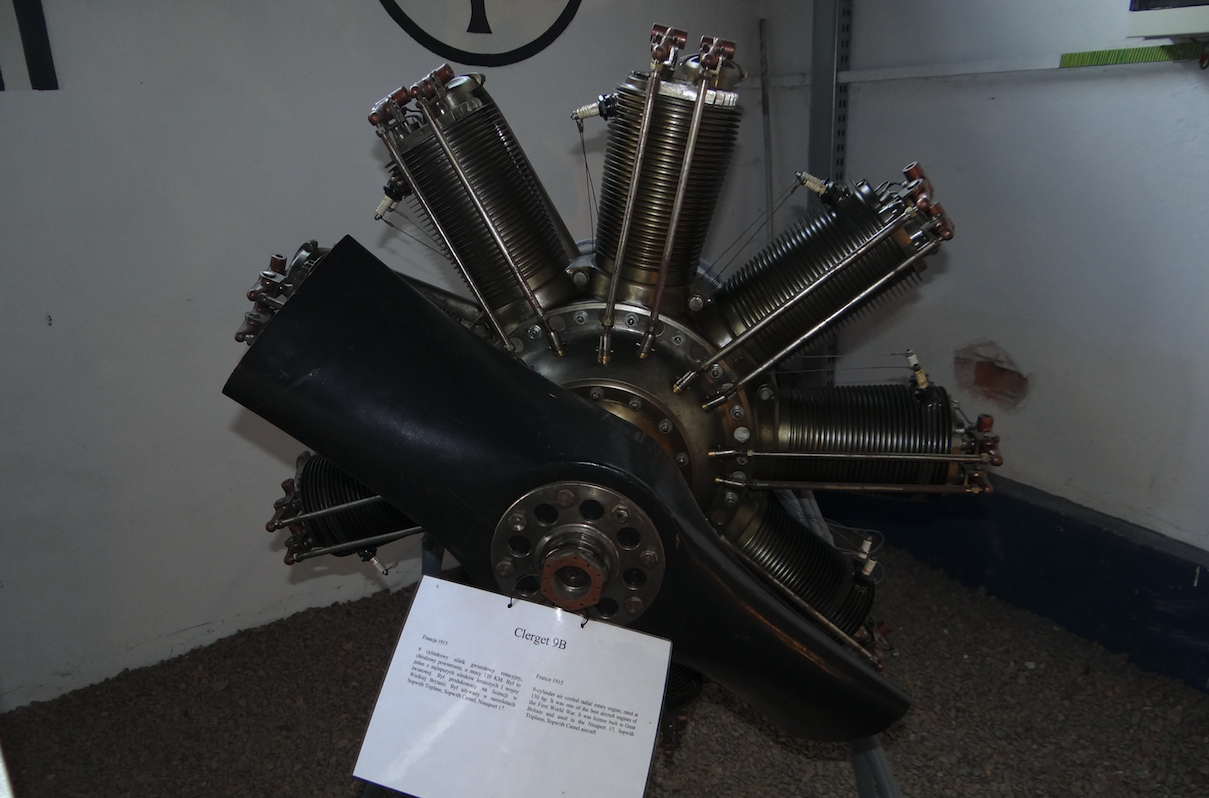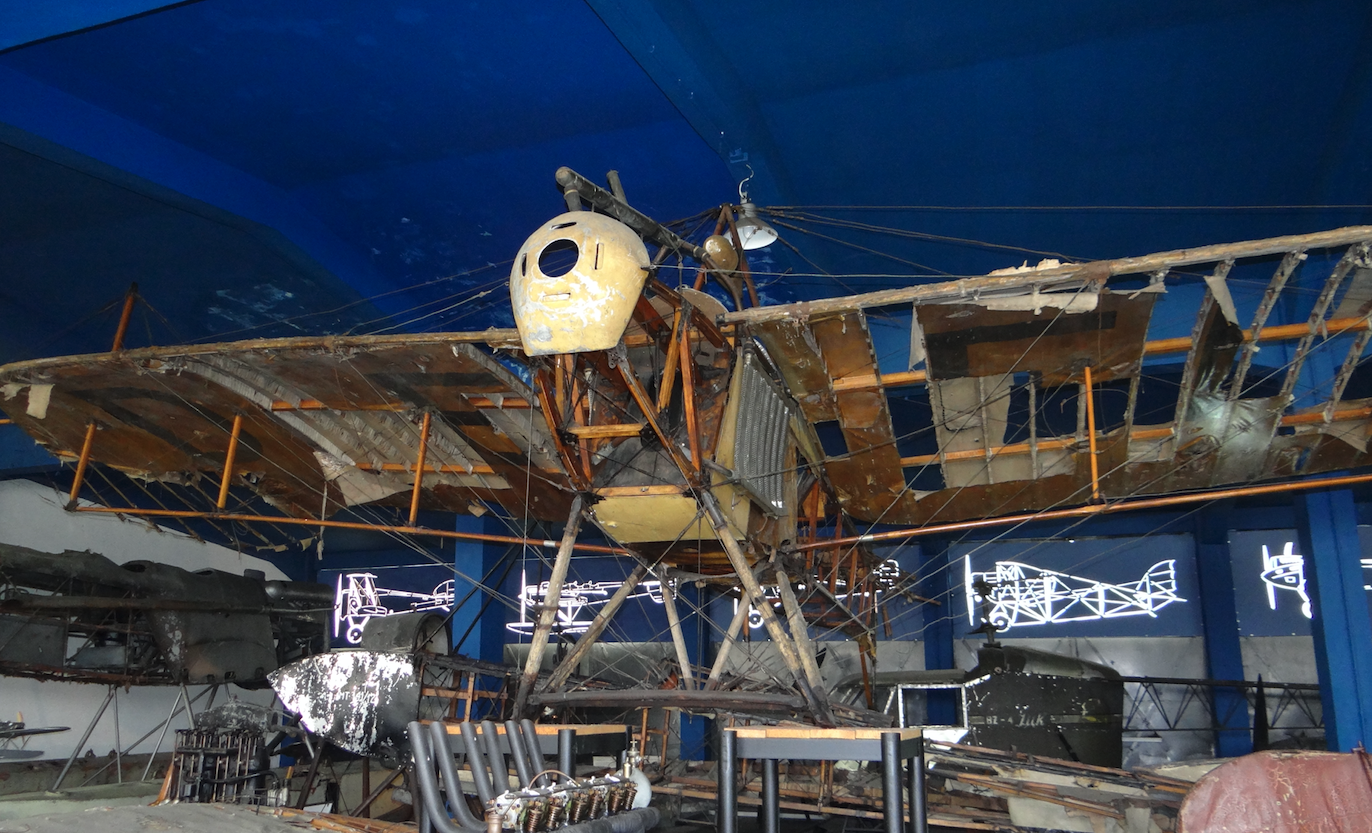Kraków 2015-01-19
Polish Aviation Industry.
Part 1.

One of the first successful Clerget 9B aircraft engines. The engine is piston, radial, rotary, air-cooled. The engine was designed in 1915 by Pierre Clerget. Its basic version developed a power of 88.26 kW (120 hp) at 1,250 rpm, and the displacement was 16.3 dm3. The engine rotated together with the propeller, and the crankshaft was stationary and attached to the structure of the aircraft. Inside the shaft there is a channel through which fuel with castor oil is fed.
The beginnings.
The Polish Aviation Industry almost reaches the very birth of the world aviation with its traditions.
In 1908, the first Poles obtain air permits; Count Michał Scipio del Campo in France, and Rudolf Warchałowski in Austria. Mr. Rudolf Warchałowski has become a precursor of flights with passengers. It is also worth mentioning the pilot Grzegorz Piotrowski, who on September 22, 1910, set the world record for the flight distance with one passenger on the distance from Saint Petersburg to Kronstadt, with a result of 37 km.
In 1909, the first aviation organization was established in Warsaw under the name of Koło Awiatów, and at the same time the first aviation model shop was established by Mr. Wojciech Woyna.
On September 19, 1909, the French pilot Legagneux demonstrated his plane in the air for the first time over Warsaw.
Awiata.
The first Polish aircraft factory was founded on May 21, 1910 by the Warsaw Aviation Society Awiata, at Pole Mokotowskie, at Puławska Street. The initiator of the construction was prince Stanisław Lubomirski, financier, industrialist, promoter of motorism and aeronautics. Awiata member was, inter alia, Mr. Czesław Tański.
The Russian Navy in September and October 1910 purchased two planes in Aviat. In the period 1911-1912, the plant produced Farman-III and Farman-IV airplanes. These planes were built under the license of the German company Aviatik (license with a license). About 8-10 copies were built within 8 months. They were also called Farman - Awiata. Later, Breliot XI planes were built. These machines were built on the basis of original French documentation. The plant's production capacity was 15 aircraft per year. The Russian army bought a few copies. In 1911, Awiata, apart from the two mentioned types, also offered for sale Etrich Taube planes.

In the summer of 1911, count Michał Scipio del Campo made a test flight of the first Polish structure built by Stanisław Cywiński and Czesław Zbieński.
In addition to building airplanes, Awiata ran the Pilot School. It was headed by the pilot Henryk Segno, and later Count Michał Scipio del Campo. Farman-Aviatic and Breliot XI planes were used in the training. Awiata has issued about 10 pilot certificates. In the summer of 1911, Awiata organized a permanent aviation exhibition and air show, called the 1st All-Russian Aeronautical Exhibition. All three types of aircraft were presented there.
In January 1912, the tsarist authorities revoked Aviat's operating license. In March 1912, the Russian invader closed down the production plant. The property was taken over by the Russian army. In the buildings of Aviata, the invader established his own aviation school, which was a branch of the Aviation School in Gatchina (45 km south-west of St. Petersburg). On November 17, 1912, 32 officers, 50 soldiers and several flight instructors came to Pole Mokotowskie from the Military Aviation School in Gatchina. For 5 months, until the end of March 1913, aviation training was conducted here. After its completion, the planes were transferred to the fortresses in Modlin and Brest-Litovsk. In Pole Mokotowskie, the invaders placed a (aeronautical) balloon company.
After the outbreak of the Great World War, the Germans entered Warsaw and took over the objects of the World. The Germans launched a branch of the Albatros aviation plant and the School of Observers here. They built new facilities, including workshop buildings and new, more hangars.
Even during the Great World War, the Polish Air Navigation Society was established. On February 1, 1917, it organized the first flight course.
Written by Karol Placha Hetman
